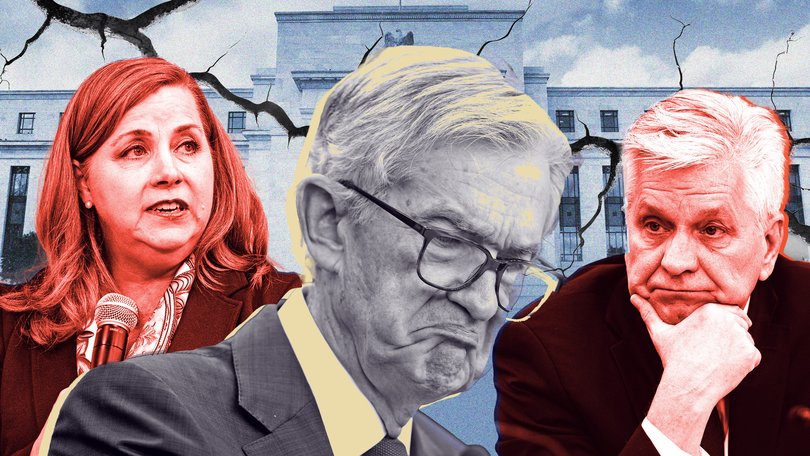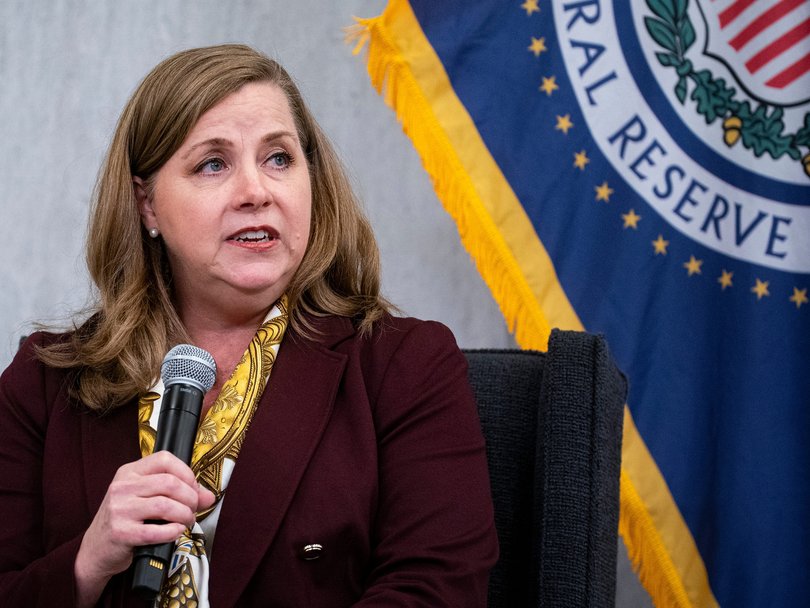THE ECONOMIST: US Federal Reserve in rare double dissent over interest rates decision under Trump pressure

For all the power it wields over the global economy, the Federal Reserve projects remarkable cool. Whereas rate-setters at other central banks frequently disagree with each other over the direction of monetary policy, Fed policymakers tend to stick together.
That serenity is now being ruptured, just as President Donald Trump ramps up his attacks on the Fed, and his tariffs put America’s economy to the test.
On July 30 two rate-setters, Christopher Waller and Michelle Bowman, voted against the majority decision to keep interest rates unchanged at 4.25–4.5 per cent, preferring to cut them by a quarter of a percentage point instead. It is the first double dissent by governors on the Fed’s board in more than 30 years.
Sign up to The Nightly's newsletters.
Get the first look at the digital newspaper, curated daily stories and breaking headlines delivered to your inbox.
By continuing you agree to our Terms and Privacy Policy.The split was well-telegraphed. Mr Waller gave a speech entitled The Case For Cutting Now a fortnight ago; Ms Bowman gave a dovish-sounding speech in late June.
Both sides have couched the debate in the tame language of macroeconomics. In that guise, the disagreement is simply over the wobbliness of the labour market.

Mr Powell sees a relatively low unemployment rate and above-target inflation; the dissenters note that households are spending less and private job creation is soft.
Disagreements over the state of the economy are not unusual. But it is rare for these differing views to rise to the point of a public dissent. Mr Waller’s vote will not quell speculation that he could become a possible successor to Mr Powell when the chairman’s term ends in nine months’ time; the betting markets put his odds at 17 per cent. The pithy title of Mr Waller’s intervention in July could easily be read as a bid to cut through to Mr Trump, who is a keen fan both of catchy slogans and lower interest rates.
Mr Waller and Ms Bowman were appointed in the first Trump administration (as was Mr Powell). She also dissented in 2024, although then it was to argue hawkishly that interest rates shouldn’t fall too fast — airing worries about too-high inflation that Mr Powell echoed after the latest policy meeting.
For his part, the chairman went to great lengths to emphasise the civility and high-mindedness of the disagreement. July’s was one of the better meetings he said, where the case for faster cuts was thoughtfully argued.

Whatever jockeying might be going on, and whatever bluster emanates from the White House, investors still see Mr Powell as the boss. In recent months Mr Trump has flirted with the idea of sacking the chairman; MAGA types have sought to use cost overruns for an expensive renovation project at the Fed as an excuse to push out Mr Powell.
Yet markets did not budge as the president made a rare trip to the central bank last week, supposedly to visit the construction site.
On July 30, too, investors followed Mr Powell’s lead. The chairman’s remarks in a press conference after the decision had a slight hawkish tilt to them. He defended his wait-and-see approach and even entertained the provocative idea that the Fed could have responded to tariff inflation by actively raising rates. Treasury yields nudged up a little as he spoke, and stocks fell, accordingly.
Expectations for the next Fed meeting in September shifted, too. Ahead of the latest decision interest-rate traders had been pricing in a two-thirds chance of a cut in September. By the time Mr Powell finished speaking, they had shifted to less than half — double dissent notwithstanding.
Originally published as The Federal Reserve sees a rare double dissent
